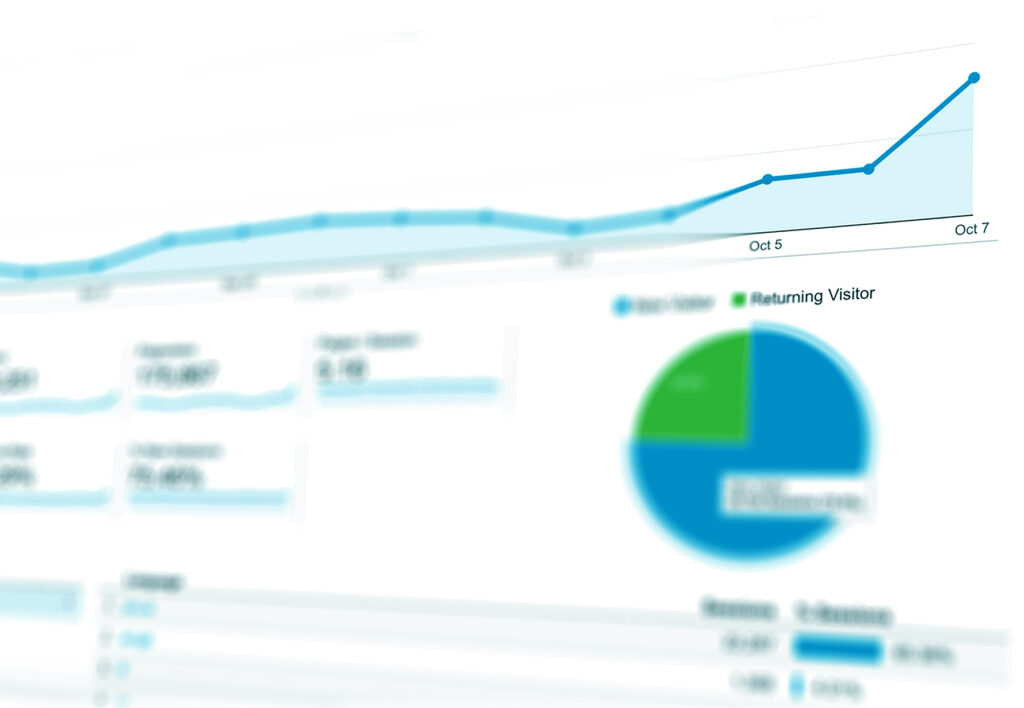In today’s swipe-left, swipe-right society keeping a finger on the pulse of those you serve is more crucial than ever, but we’ve got you! We’re here to walk you through some Digital Marketing success strategies and free tools that will not only inform you about your audience but also strengthens your connection with them.
Whether it’s through the direct questions you ask your customers face-to-face or the digital trails they leave online, each piece of information is a puzzle piece in understanding the bigger picture of your audience’s desires and needs.
Harnessing Digital Tools for Audience Insights
Navigating the world of audience analysis doesn’t have to cost a fortune. There are many free tools and methods that can provide valuable insights into who your audience is and what they want.
Social Media Analytics
- Platforms like Facebook, Twitter, and Instagram offer analytics that provide insights into follower demographics, engagement patterns, and content preferences. This data helps tailor your social media strategy to better resonate with your audience.
Surveys and Feedback
- Tools like Google Forms or SurveyMonkey allow for the collection of direct audience feedback, offering valuable insights into their preferences and needs.
Content Analysis
- Reviewing which content performs best using your CMS or platforms like WordPress can guide your content strategy, highlighting topics that engage and interest your audience.
SEO Tools
- Free SEO tools like Google Search Console, Ubersuggest, or MozBar offer insights into the search terms driving traffic to your site, helping to understand what your audience is interested in.
Competitor Analysis
- Analyzing competitors’ online presence through tools like SimilarWeb which provides an understanding of their audience demographics and traffic, offering benchmarks and insights for your strategy.
Networking and Community Engagement
- Engaging with your audience through forums, social media groups, or local meetups provides direct insights into their preferences and needs, helping to shape a more targeted and effective approach.
Google Trends
- Utilizing Google Trends to monitor the popularity and trends of specific search queries can inform your content and marketing strategy, ensuring relevance and timeliness.

In-Person Questions for Direct Insights
- Initial Motivation: “What inspired you to come to us today?” This question helps understand the primary reasons that drive people to your business, providing a foundation for engagement and improvement.
- User Experience Feedback: “Can you describe a recent experience with our product/service?” This inquiry aids in assessing customer satisfaction and identifying areas for enhancement.
- Problem-Solving Opportunities: “What challenges are you facing that we might help solve?” By addressing this, you can tailor your offerings to better meet the needs of your audience.
- Value Identification: “What features or aspects of our offering do you value the most?” Understanding this enables you to emphasize these strengths in your marketing and product development.
- Innovation and Improvement: “If you could change one thing about our product/service, what would it be?” This question uncovers potential areas for innovation and refinement.
- Usage Patterns: “How do you typically use our product/service?” Gaining insight into this helps in understanding how your product fits into the daily lives of your customers.
- Communication Preferences: “What’s your preferred method of communication for receiving updates or support?” This ensures you reach your audience through their preferred channels.
- Exceeding Expectations: “Can you tell me about a time when our product/service exceeded your expectations?” Identifying such instances can highlight what makes your offering stand out.
- Decision-Making Criteria: “What are the key factors you consider when choosing a product/service like ours?” This helps understand the decision-making process of your audience.
- Market Gaps and Opportunities: “Is there anything you feel is missing from our market or industry currently?” This can reveal new opportunities and areas for innovation.

The Magic of Google Analytics
First off, Google Analytics is like that friend who notices everything but only shares the good stuff. It’s packed with data that can tell you who your visitors are, where they come from, and what they like on your website. The trick is knowing where to look.
Demographics and Interests
Start with the ‘Audience’ section. It’s like people-watching but with numbers. Here, you can find demographics (age and gender) and interests. This isn’t just numbers game; it’s about understanding the real people behind those visits. Are they young tech enthusiasts or seasoned gardeners? Knowing this helps you tailor your content to match their interests.
Geo-Location Data
Next, check out the ‘Geo’ tab. It’s not just about where your audience is, but what this says about their behaviour and needs. If you’re seeing a lot of visitors from Toronto or Vancouver, think about what local content or services you can offer. It’s all about making your website feel like home for your audience.
Behaviour Flow
Now, for a bit of detective work. Under ‘Behaviour’, there’s a treasure trove called ‘Behaviour Flow’. It shows the path visitors take through your site. It’s like tracking footprints in the digital sand. Are they dropping off after the homepage, or are they exploring your blog posts? This insight is golden because it helps you understand what’s working and what’s not.
Acquisition Insights
Let’s not forget the ‘Acquisition’ section. It tells you how people find your website. Is it through search engines, social media, or direct visits? This is crucial because it helps you understand which channels are your best allies in reaching your audience.
Putting It All Together
Now, take these pieces of the puzzle and put them together. The demographics tell you ‘who’, the geo-location hints at ‘where’, and the behaviour flow alongside acquisition insights reveal the ‘how’ and ‘why’ of your audience’s interactions with your site.
The Real Deal
Remember, the goal is not just to collect data, but to make sense of it and act on it. It’s like baking; you need the right ingredients (data), but the magic happens when you mix them correctly and bake them into something delicious (your tailored content and strategy).
Keep It Real
Lastly, don’t get lost in the data. Keep your content authentic and engaging. Use these insights to enhance your connection with your audience, not to turn your site into a data-driven robot. After all, at the heart of every click and visit is a person, just like you and me.
So, there you have it—a straightforward, no-cost way to use Google Analytics and other free-methods to understand and grow your audience. Dive in, explore, and most importantly, have fun with it! Remember, the best insights come from curiosity and a genuine desire to connect with your audience. Let’s make your digital presence not just visible, but valuable!
